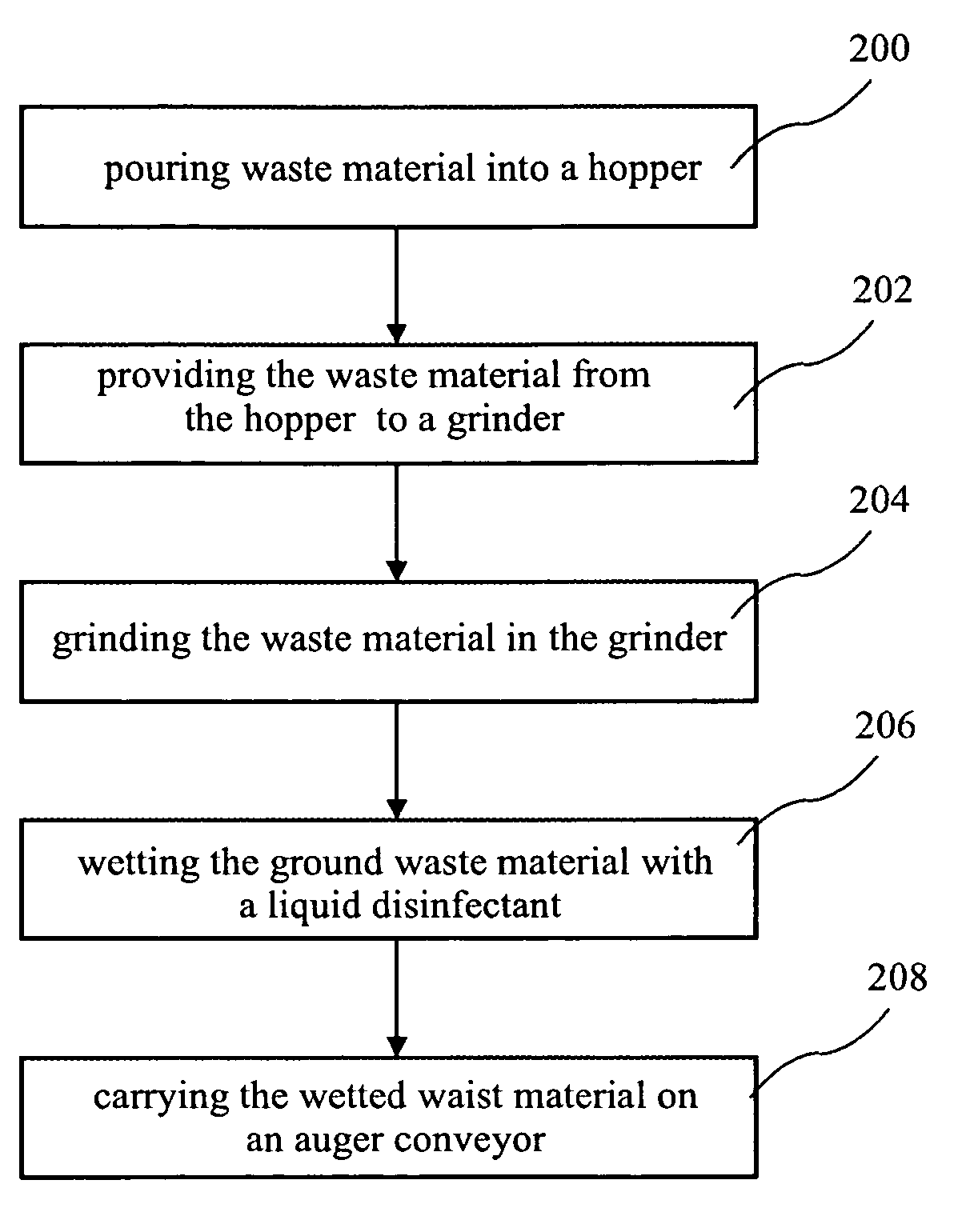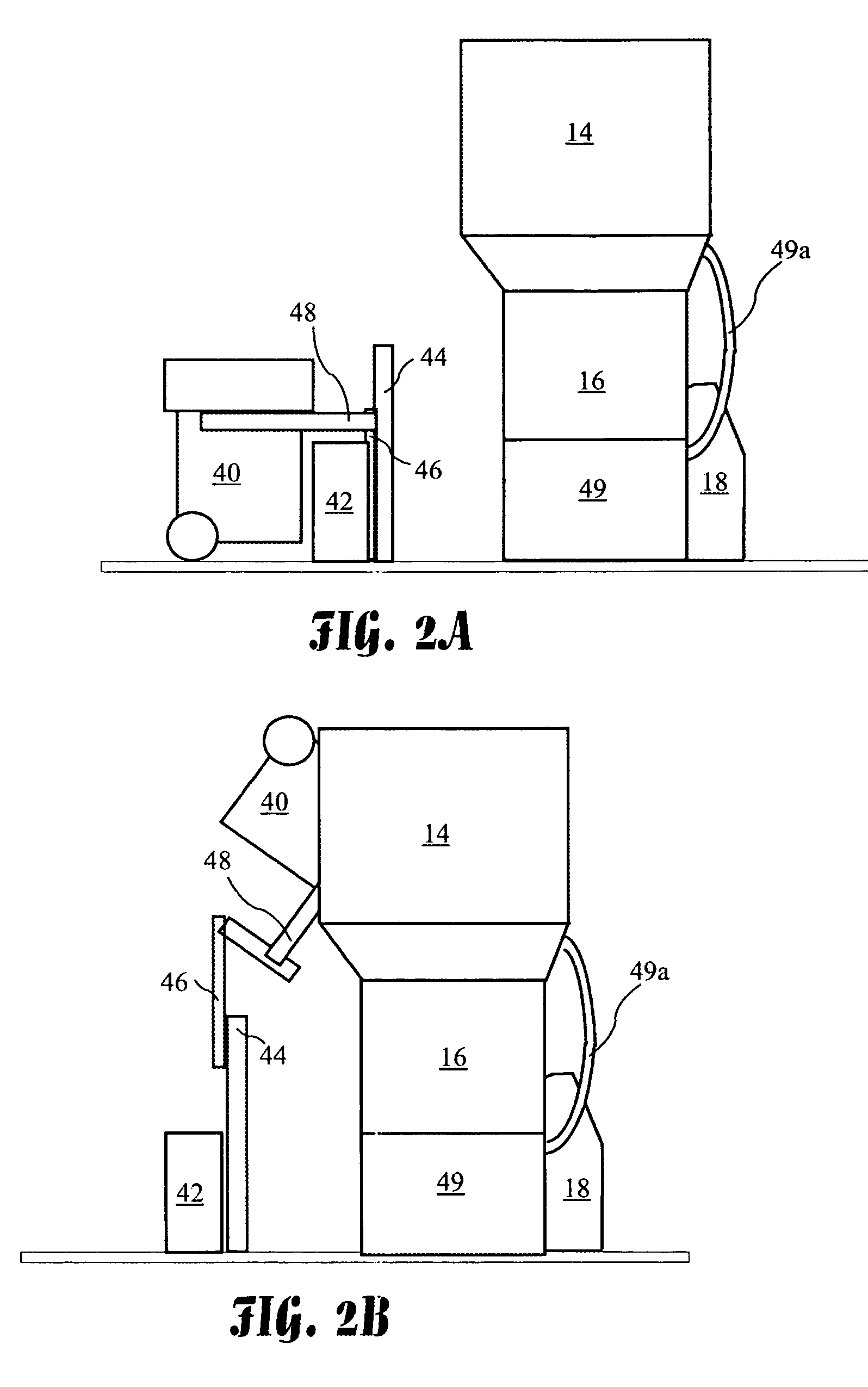Infectious waste treatment
a technology for infectious waste and treatment, applied in cocoa, grain treatment, medical waste disposal, etc., can solve the problems of difficult to distinguish harmless waste from infectious waste, hospital waste must be treated, and hospital waste generates a variety of waste not suitable for normal disposal
- Summary
- Abstract
- Description
- Claims
- Application Information
AI Technical Summary
Benefits of technology
Problems solved by technology
Method used
Image
Examples
Embodiment Construction
[0023] The following description is of the best mode presently contemplated for carrying out the invention. This description is not to be taken in a limiting sense, but is made merely for the purpose of describing one or more preferred embodiments of the invention. The scope of the invention should be determined with reference to the claims.
[0024] A waste treatment system 10 according to the present invention is shown in FIG. 1. The waste treatment system 10 includes a cage 12, hopper 14, a grinder 16, a main solution tank 18, and an auger 20. A hospital waste container 40 is placed into the cage 12 where a lift unit 42 lifts the container 40 and dumps hospital waste carried in the container 40 into the hopper 14 (see FIGS. 2A and 2B). The hopper 14 resides above the grinder 16 and feeds the waste into the grinder 16. The grinder 16 grinds the waste, and the ground waste drops into the main solution tank 18 where the ground waste is wetted in a disinfectant liquid. The auger 20 lif...
PUM
 Login to View More
Login to View More Abstract
Description
Claims
Application Information
 Login to View More
Login to View More - R&D
- Intellectual Property
- Life Sciences
- Materials
- Tech Scout
- Unparalleled Data Quality
- Higher Quality Content
- 60% Fewer Hallucinations
Browse by: Latest US Patents, China's latest patents, Technical Efficacy Thesaurus, Application Domain, Technology Topic, Popular Technical Reports.
© 2025 PatSnap. All rights reserved.Legal|Privacy policy|Modern Slavery Act Transparency Statement|Sitemap|About US| Contact US: help@patsnap.com



